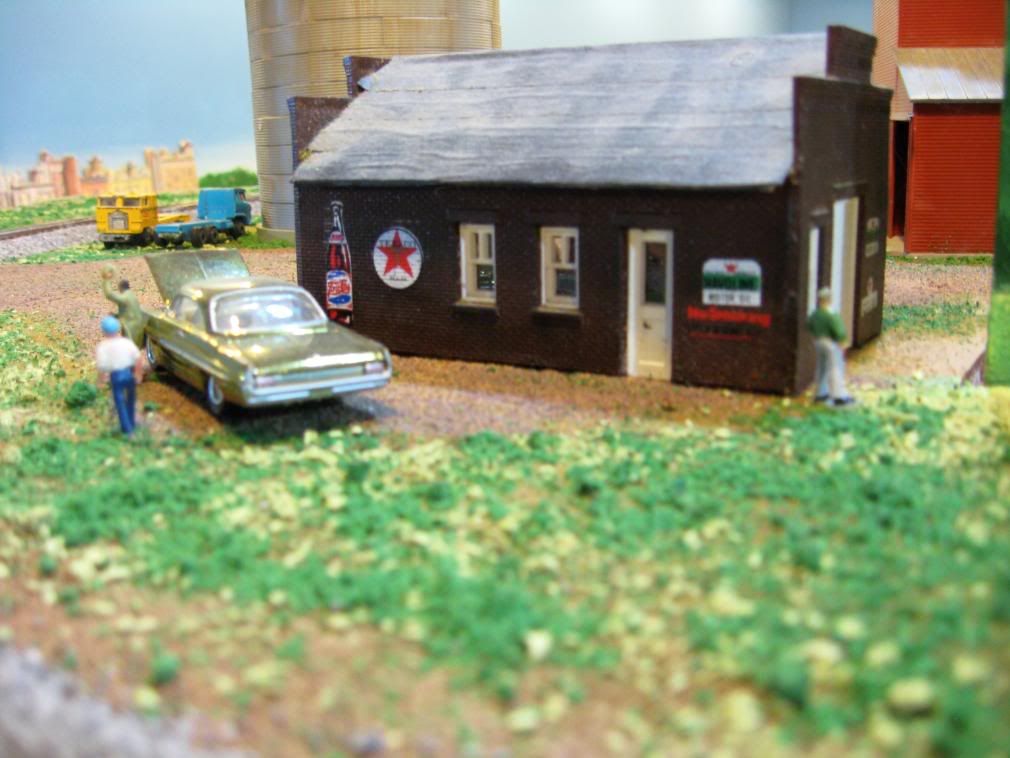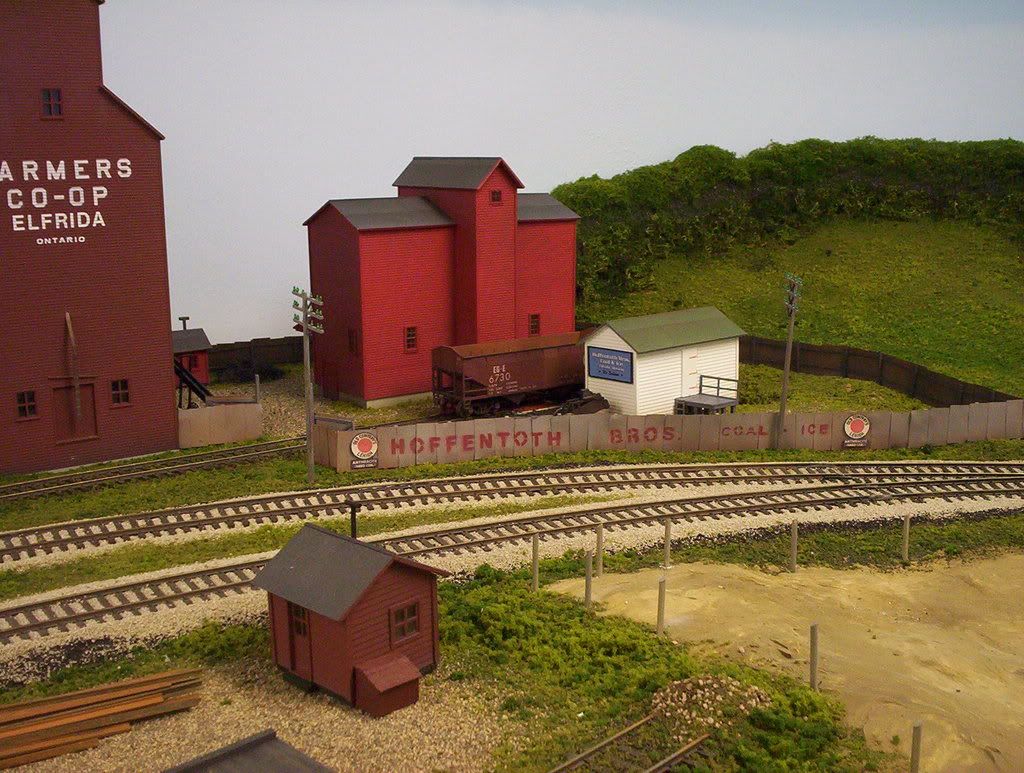Hi Guys
I’m working on a DPM brick building and would like to add a tar paper roof. I’ve been looking around for some reference photos and can’t seem to find any. Can anyone help me out, thanks.
Tom
Hi Guys
I’m working on a DPM brick building and would like to add a tar paper roof. I’ve been looking around for some reference photos and can’t seem to find any. Can anyone help me out, thanks.
Tom
i used fine grit, black emery paper and painted the seams on with a black felt tip pen.
grizlump
Prototype reference photos? Typical tarpaper comes on 36" wide rolls laid out with ~4" overlap.
For modeling, use tissue paper cut into strips that are about an inch wide overlapping to leave 32 scale inches exposed. Cover with a diluted glue solution similar to your ballast gluing agent. Once dry paint with grimy black. From there you can Dullcote. I wash with spots of india ink/alcohol solution. The alcohol will turn the Dullcote a weathered white and simulate pooled mineral/dirt deposits.
Thats my version, there are hundreds. Hopefully it’s what you’re looking for. The materials are so cheap it’s fun to experiment.
This is similar to what I’ve done; I bet your results are darned good!
If I modeled in O scale or something a bit larger, that’s what I’d do. Modeling in HO scale, I use poorer to regular quality paper for this purpose because emery paper is too gross in that scale, leastwise for me.
Mark
Tar paper is relatively thin and degrades pretty quickly when exposed to sunlight.In the trades it is commonly called roofing felt and comes in 15#( thin) and 30#(thicker) weights.It’s nomally used as an underlayment for shingle roofs. I think the OP might be refering to rolled roofing which is an asphalt impregnated fiberglass(newer) or organic membrane ( with or without granules). It comes in various widths from 3’ on up.I’ve installed a few over the years.
Either way, I simulate it with masking tape.(HO scale)

Hope this helps.
Terry
Thanks for the tips guys.
Actually I’m trying to find pics of real roofs. I’ll do some more searching tonight and see if I come up with anything.
This is a DPM Freight Depot I did with plain masking tape. I simply applied the tape in overlapping rows to the styrene roof piece. I mixed up cheap acrylic craft paint - mostly black and a little white, to get the dark gray. By not mixing the paint too thoroughly, I get slight color variations which is a more realistic look.
A few months later, well, you know what they say about the best laid plans of mice and men. The glue on the masking tape didn’t hold very well, and the tape started to peel off at the bottom of each row. I took more craft paint and painted under the peeling tape to cover the white styrene of the roof. It makes the building look much more dilapidated.
I also like black Rustoleum speckled paint for roofing. It’s got a rough texture, and the speckling looks a lot like asphalt shingles or roofing tar. I weather it with a bit of powder and hit it with Dul-Cote to seal it up and flatten out any remaining gloss in the paint. That’s how I did this roof:
I use masking tape painted with charcoal color acrylic craft paint from Wal-mart.
You’re right, Terry: many modellers seem to confuse roll roofing with tarpaper. Roll roofing comes in other colours besides black, too, very similar to what would have been available in asphalt shingles. In addition to black, I’ve seen blue, grey, green, and red, with the latter two the most commonly seen in these parts.
I generally use paint to represent roll roofing, as most of the structures are meant as a background to the trains, rather than as stand-alone models:



To use the paint method, cut masking tape to a suitable width, then cut it into lengths appropriate for the structure - 36" wide by 36’ long seems to be a common, but not the only, size. Apply the tape to an already-painted roof, leaving a gap of about three scale inches between sections. Spray the masked roof with a contrasting colour - dark grey seems to work well on most roof colours. Next, remove the entire bottom course of tape, then use your grey, perhaps mixed with some of the basic roof colour, and well-thinned, at the lower edge of the lowest remai
I use strips of masking tape painted with Floquil ‘weathered black’.